| |
|

SUNDAY. SEPTEMBER 7, 2008Ner Tamid Synagogue Open House and Barbeque

FRIDAY, SEPTEMBER 12, 2008 Temple Solel S'more Shabbat
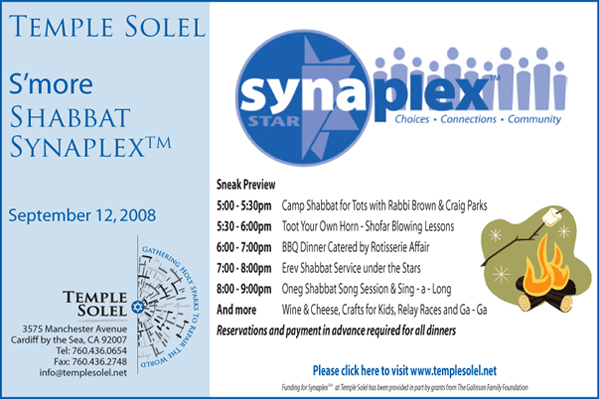

FRIDAY, SEPT. 12 - SUNDAY, SEPT 14 Temple Emanu-El dedication weekend.
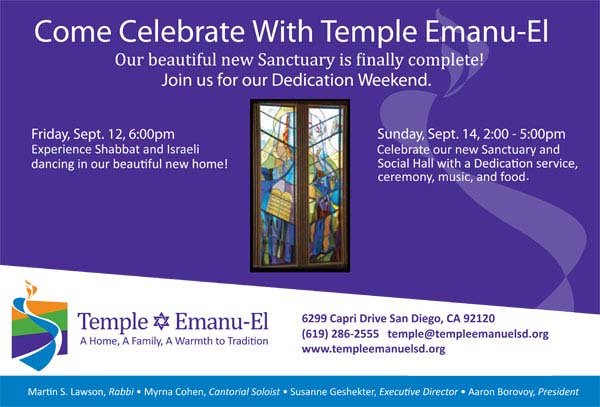

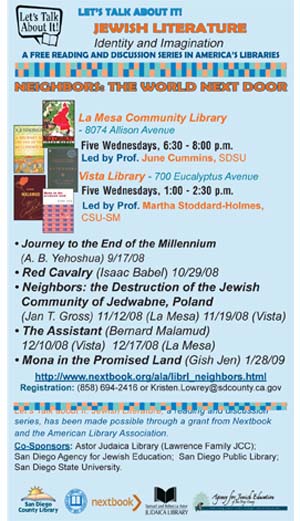 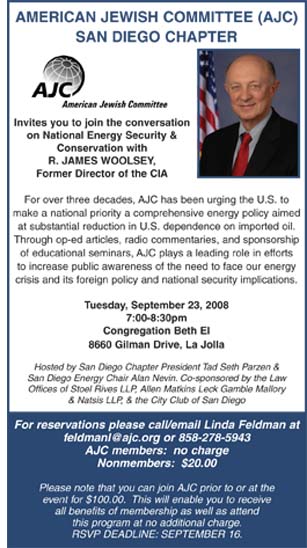
MON., SEPT. 29-THURS., OCT. 9
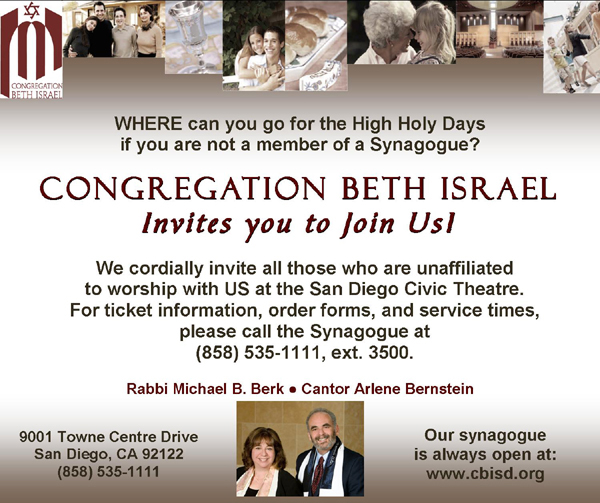

Please actively support San Diego Jewish World

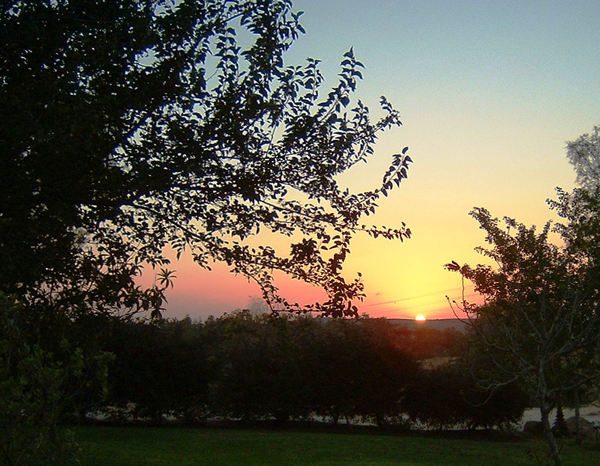
FROM THE GATES OF THE NEGEV
Tales of squill, wagtails and sunsets
By Ulla Hadar
 KIBBUTZ RUHAMA, Israel— There are two major factors that indicate to us Autumn is on the doorstep. One is the flower squill (in Hebrew hatzav) and the other is the white wagtail bird (in Hebrew nachlieli) KIBBUTZ RUHAMA, Israel— There are two major factors that indicate to us Autumn is on the doorstep. One is the flower squill (in Hebrew hatzav) and the other is the white wagtail bird (in Hebrew nachlieli)
In our kibbutz, the squill started blooming approximately two weeks ago. This a little bit earlier than usual probably as a result of the very hot summer this year.
The old people say that when the squill blooms early the year to come will be filled with rain.
As part of an agricultural community, I am used to looking for signs of the changing season. Nature has it's own beautiful way to show us when a new season is on its way.
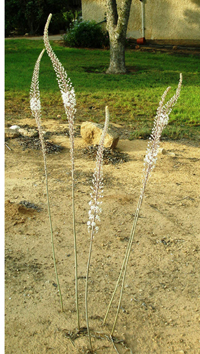 When my children were in kindergarten, they would go searching for the blooming squills (at right) in September. They would tie a colored string at the bottom of the stem as soon as they saw that flowering was about to start. They would come back each day to check the progress of “their” squills. The saying is that once the flowers on top of the stem are blooming, the winter has arrived.
In Hebrew we say "Hahatzav poreach veha keitz boreach" – "the squill is blooming and the summer is running away.” When my children were in kindergarten, they would go searching for the blooming squills (at right) in September. They would tie a colored string at the bottom of the stem as soon as they saw that flowering was about to start. They would come back each day to check the progress of “their” squills. The saying is that once the flowers on top of the stem are blooming, the winter has arrived.
In Hebrew we say "Hahatzav poreach veha keitz boreach" – "the squill is blooming and the summer is running away.”
The white wagtail bird (below) is another sign for us that autumn has arrived.
These migrating birds arrive in Israel in the beginning of September and leave for Europe in May. As September is not even a week old, I have not yet seen any of these birds but surely they will be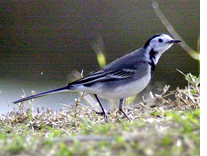 spotted one of these coming days. spotted one of these coming days.
In Hebrew we say "nachlieli mevazer al bohastav" – "the white wagtail notifies us that autumn is arriving.”
The days are getting shorter; in the morning and evening, there is
darkness all around. The cooler weather in the afternoon, indicates the changes ahead of us. The sunsets have become more colorful and expressive than the sunsets during the summer.
Personally, I feel very attached and close to nature around me. Glancing at the brown and dry fields I wonder when the first rain will arrive. I find myself anticipating the tractors working in the fields, the
plowing and seeding process. Eventually those brown colors will be transformed into green lush fields. The vast and magnificent surroundings will be filled with wild flowers in all the colors of the rainbow. How difficult to grasp the beauty and the divinity of nature.
Hopefully this year will be blessed with a lot of rain. Soon I will looking up into the sky searching for rainclouds to appear.
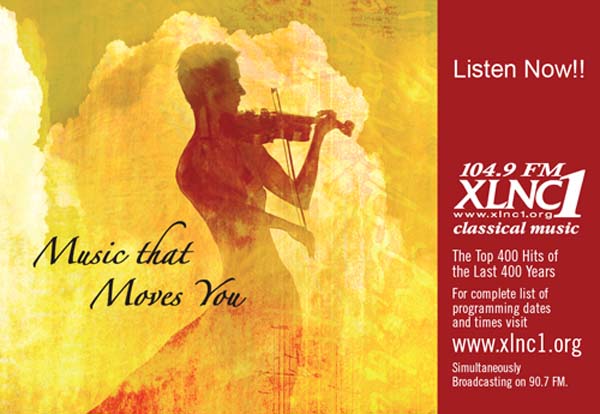



A lightning tour through South Italy's numerous Jewish historical sites
By Karen Primack
TRANI, Italy—Before we left for Italy, research had made us aware of several sites of Jewish interest in the Southern provinces of Puglia, Basilicata, Calabria, and Sicily.
Our first such stop was Trani, an exquisite medieval town on the Adriatic coast, where the 13th century Scolanova Synagogue was reconsecrated in 2005. Located on Via Sinagoga, it had been a synagogue prior to the 14th century, when the Jews of Puglia were expelled. It was used as a church until 50 years ago, when it was abandoned. We were shown the modest but beautiful ancient space by Avram Zeliko, who davens there, and whose family has lived and owned property in the synagogue area for centuries. His family came from Palestine during Roman times. The shul is recognized by the Orthodox Italian Rabbinic Council and the Union of Italian Jewish Communities, although many of its members are not observant and some are intermarried. Others were officially converted in Milan.
The town of Oria, once a major Jewish center, has a city gate known as Porta Giudea (Jewish Gate) or Porta dei Ebrei (Gate of the Jews), and one-quarter of the old city is labeled as the Jewish Quarter (Rione Giudea) on street signs. The owner of a restaurant in the quarter helped us find an unlabeled house that was formerly a synagogue, and we excitedly photographed it. There is a large, old-looking metal menorah outside the old city, near the Porta Giudea, but we could find no explanation for it.
We walked around the old area of Lecce and came across a street named after Abramo Baldes. We wanted to know more, but no one knew anything about Jews living in that quarter many years ago.
In the scenic town of Gallipoli we noticed the words “Giudecca” on a map, and set about to look for that Jewish quarter. There was no trace of the old area any more; just modern buildings. However, people were aware of the old Giudecca and pointed out where it used to be. We had better luck in Manduria, which has an intact Jewish quarter along the Vico Ebrei (Jews Alley). A privately owned museum was carved out in one of the tiny buildings with a menorah on a table, indicating that the place was probably a synagogue. We walked through the old city of Taranto looking for a sign of Jews (we had read that there were “significant traces” of a former medieval Giudecca there). We scoured the area looking for a telltale street sign, but many were unlabeled. The people we asked had never heard of Jews being there.
Venosa, where Jews settled in Roman times, was a highlight. Not only did we see ancient, Roman-style Jewish tombstones in the castle’s archeological museum, and fragments of 9th century Jewish (and other) tombstones built into the walls of an incomplete 13th century church, but we also saw the famous Jewish catacombs.
Led by restoration director Savarese, we toured the Jewish part of the catacombs at the La Madalena hill (there is an adjoining Christian complex). The complex we saw contained 108 tombs and featured special non-thermal lighting and a sophisticated computer system to monitor geophysical occurrences that might destabilize the catacombs. The complexes have been closed to the public since 1960 to safeguard the structures. Visitors can obtain prior permission by contacting Soprintendente della Basilicata, c/o Soprintendenza Archaelogica, Via Serrao, 85100 Potenza, Italy (tel. 0971 21 719), and requesting “autorizzazione visitare catacombe ebraiche di Venosa.”
The tombstones were written in Latin, Greek, and Hebrew, and some were inscribed with images of a menorah, shofar, or lulav and etrog. Impressive as it was to see the web of (now empty) openings that held tombs in the 4th century, it is even more so to become aware of what those tombstones (available to the public only in pamphlets) tell us. For instance, the tombstone of an adolescent girl named Faustina reveals that her funeral ceremony was attended by the whole city, including Jews, Christians, and Pagans. Markers also tell of the existence of apostuli, emissaries from Palestine collecting taxes from Diaspora Jews. Others describe the important position the departed held – city official, rabbi, physician, member of a council of elders, et al.
We stopped briefly in Castrovillari to search for a synagogue mentioned in one source. A knowledgeable man told us where the Giudecca used to be (it is not labeled), but he said the synagogue no longer exists.
Abruptly moving up to the 20th century, we saw, in Ferramonti di Tarsia, the former concentration camp where foreign and Italian Jews were interred. The Italian guards, who hated the Nazis, saved the 3000 Jews; there were only four deaths there, all of natural causes. When the Nazis came south to organize a deportation, the Italians hoisted the yellow typhus flag and the Nazis fled each time. The camp housed synagogues, two schools, and a hospital, and today it has a Museum of Tolerance. We viewed the camp through a fence since no official was available to open the gate on what was election day for a new prime minister.
In Santa Severina we were unable to find the Jewish quarter until we were advised by one man that it was the former Greek quarter. We photographed a street in the old Greek quarter, just in case. In Bova Marina, where a Roman synagogue was excavated by Enrico Tromba, we viewed the synagogue’s mosaic floor, which has been relocated to the Municipio building. It is in only fair condition, but we could make out a menorah, a shofar, and a so-called “Solomon’s Knot,” a design of interconnecting ovals with which we were not familiar.
Reggio di Calabria was our most urban stop. The city boasted a long, steep, and prominent Via Giudecca, now totally modern, with an escalator being installed down the middle! We had read, in a booklet by Enrico Tromba, about certain Jewish artifacts being located in Reggio’s national museum. We looked carefully for them in the museum, without success. We showed the booklet’s pictures of these artifacts to museum officials, who said they were housed on an upper floor that was closed for the day due to problems with restoration employees. Despite repeated appeals, they were adamant. Finally, when we asked to see the director of the museum, they found a way to admit us to the closed area. We were delighted to see a 4th century C.E. marble inscription in Greek saying “Synagogue of the Jews,” a North African oil lamp with a menorah design, and 5th century bronze coins with a menorah design found near the Bova Marina synagogue.
Sicily was particularly important in Italian Jewish history, for by the end of the 13th century Jews had fled forced conversions in the other parts of Southern Italy. They were safe in Sicily until the Spanish edict of expulsion in 1492, which also applied to Sicily, then under Spanish domination. At that time there were 100,000 Jews in Sicily, and 40 percent of Siracusa was Jewish. The state issued particularly harsh economic sanctions against Jews, resulting in over half the Jews converting.
The beautiful old part of Siracusa is known as Ortigia, and in it lies a Giudecca with five streets specifically named for the Jews living there -- Via Giudecca, Vicolo Giudecca I, II, III, and IV. The best Jewish site there is a perfectly intact mikveh dating from the 6th century. It is located in a palazzo that has been skillfully renovated into the Alla Giudecca Residence Hotel, which provides guided tours of the mikveh in English and Italian. To find out when tours are scheduled, call 39 0931 22255. The hotel has a website at www.allagiudecca.it.
In Palermo, the Jewish quarter is delineated by street names in Italian, Hebrew, and Arabic. We also discovered a building on Vicolo Meschita that we were confident was a synagogue, and a neighboring businessman confirmed this.
It is difficult to imagine the rich Jewish life that existed in South Italy from Roman times to 1300 (1500 in Sicily). Jewish communities flourished throughout Sicily and in Bari, Oria, Capua, Otranto, Taranto, and Venosa. Among them were painters, physicians, actors, poets, tradesmen, and peddlers. During the 9th century, schools of Hebrew poetry emerged, and 100 years later Venosa, Bari, Otranto, and Oria had Talmudic academies. It is sobering to realize that today the number of Jews in South Italy is probably fewer than 100.
In addition to establishing Ner Tamid del Sud, the first new synagogue in the region in over 500 years, Rabbi Barbara Aiello has founded the Italian Jewish Cultural Center of Calabria. She has led Tu B’Shevat and Purim festivals, Shabbaton study weekends, Chanukah workshops, and Hebrew classes.
There are undoubtedly many thousands of Italians with Jewish blood in the South. Time will tell how many of them will discover and take an interest in this heritage. Aiello is certainly doing her part to bring awareness to them.


Pocahontas kicks off 2008-2009 'Green Season' Of J*Company

'Prayer isn't boring.... You are'
By David Benkof
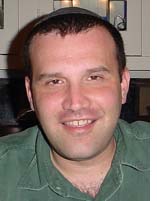 NEW YORK—Jews often complain that prayer is boring. Young people resist going to synagogue - and older people drift away from prayer altogether - because they find it to be a chore. In response to this claim, Rabbi Harold Schulweis, perhaps the longest-tenured pulpit rabbi in California, once offered from the pulpit an admittedly obnoxious but nonetheless brilliant retort: "Prayer isn't boring.... You are." NEW YORK—Jews often complain that prayer is boring. Young people resist going to synagogue - and older people drift away from prayer altogether - because they find it to be a chore. In response to this claim, Rabbi Harold Schulweis, perhaps the longest-tenured pulpit rabbi in California, once offered from the pulpit an admittedly obnoxious but nonetheless brilliant retort: "Prayer isn't boring.... You are."
Of course, this aphorism by Rabbi Schulweis, who has served the Conservative synagogue Valley Beth Shalom in Encino, California, since 1970 was not meant to insult people, nor to turn them away from tefilah (Jewish prayer). Quite the opposite. He posed a challenge for every Jew to find himself or herself inside the siddur (Jewish prayerbook), which is filled with beautiful poetry, meaningful philosophy, and provocative theology. At its best, tefilah is an ongoing three-way conversation among the siddur, the person using it, and God. In Schulweis's words, "Instead of looking outside and criticizing the relevance of a prayer - or perhaps even the process of prayer - look inside yourself to see where you may be lacking."
Interestingly, many of the Jews who complain that the siddur bores them can listen to a rock song like "American Pie" or "Hey Jude"; or sing the national anthem at the stadium dozens or even hundreds of times without ever complaining once that they're bored. Great musical compositions perpetually renew their meaningfulness as a person's life and even his or her day develops. The siddur works the same way. Many of us who pray on a regular basis cannot say "Baruch she'amar v'haya haolam" ("Blessed be He who spoke and the world came into being") or "L'cha dodi likrat kalah" ("Go, my beloved, to greet the Sabbath bride") without being a little moved each time.
I know some people in 12-step programs, and they tell me the meetings often start with the same readings week after week. But they're rarely boring to alcoholics and other addicts, because everyone in the room is working on his or her own recovery. The guidelines and steps that are recited remind people of their own addictions and compulsions, or at least those of their loved ones.
In a way, Jewish prayer is like another pillar of observant Jewish life: Shabbat. Just as tefilah involves letting one's creativity conquer one's boredom, Shabbat is about finding creative enjoyment on a day when cell phones, iPods, and DVD players are treated as hardly more useful than paperweights.
Some people think the real problem with tefilah is Hebrew, which alienates English-speaking Jews. I disagree completely. Many if not most Israelis find tefilah to be boring, and Hebrew is their first language. In addition, services at Reform temples in the United States and elsewhere involve a lot of English, and many Reform teens and adults still find prayer boring. Yet Hebrew prayers can be moving to English speakers even if they only know the barest details of the meaning. Often, but not always, the key is the tune. Even so, don't let anyone tell you you must pray in Hebrew. The siddur isn't even all in Hebrew. Important prayers like the Mourner's Kaddish are in Aramaic, and in Eastern Europe, Jewish women used to recite Yiddish prayers called tkhinnes. So vernacular prayers have a long history.
The answer to Rabbi Schulweis's challenge is education. The more Jews learn about the pronunciation, order, and meaning of services the more likely they are to find significance in them. But Rabbi Schulweis's point still stands - a Jew who is boring is likely to find prayer boring. Luckily, most Jews, deep down, are not boring - they just need to find a path to access the siddur.


THE JEWISH CITIZEN
In tribute to Marie Berg and other community leaders who came before us
By Donald H. Harrison
 SAN DIEGO-- Each day I transcribe old articles from bound volumes of the Southwestern Jewish Press for posting in the “Adventures in San Diego Jewish History” column. For reasons that I shall explain, I take great pleasure in this task that others might find quite boring, even mind-numbing. SAN DIEGO-- Each day I transcribe old articles from bound volumes of the Southwestern Jewish Press for posting in the “Adventures in San Diego Jewish History” column. For reasons that I shall explain, I take great pleasure in this task that others might find quite boring, even mind-numbing.
If these transcriptions were not made, eventually the yellowing and disintegrating pages of Volume 1 would become unreadable and their contents possibly lost to the San Diego Jewish community. And what a shame that would be because this initial volume contains so much of the history of our community from the early 1920s through the early 1950s.
Those of us who care about history owe a debt of gratitude to Joan and Jeremy Berg, owner of Inland Industries Group LP for sponsoring the “Adventures” column in memory of his mother, referred to alternately in the news articles of this period as “Marie Berg” and “Mrs. Gabriel Berg.” Not only was she the president of the local Hadassah, but she was a woman whose advice and counsel were sought by a variety of other communal organizations.
Many other names appear in these articles, names of men and women who worked hard in behalf of their temple or synagogue, or in support of the many Jewish agencies, organizations and clubs that provided the framework for our community’s self-development as well as its outreach to the Jews in displaced- persons camps, and in the new communities of Israel.
Whenever I visit the Jewish sections of Home of Peace, Greenwood, El Camino or other cemeteries in our county, I find myself wondering about the people whose names appear on the monument stones. Who were they? What did they do? What was important to them? What contributions did they make to our community? For the most part, the headstones don’t tell us. They simply provide the person’s name, the dates of his or her birth and death, and perhaps some information about his or her relationships. He was a beloved husband, father, grandfather; she a beloved wife, mother, grandmother. Such information tells us far too little about the people buried there.
As people who actually knew them die themselves, those lying beneath the cemetery headstones shrink deeper and deeper into anonymity. Their names cease to invoke images; their stones become weathered, and eventually—as far as the living are concerned—it was as if those people never existed at all.
How unfair, how wrong this is!
As I think about Mrs. Berg—and others like her—who worked ceaselessly for the betterment of our community, I simply cannot acquiesce to the idea that their memories over time should be erased; that the community should someday be totally unaware of their deeds, and of the gratitude we owe them.
So when I am retyping the old stories, I take satisfaction in knowing that I am helping to preserve the memories and the records of activities and accomplishments of those who came before us.
These articles offer other pleasures as well. Perhaps when read separately, each article provides only a few trivial facts of history. But when the articles are read along with other articles, week after week, one soon begins to discern patterns in how our community developed, what its major concerns were, and how people organized to solve problems.
If a member of your family was a community activist, his or her name may show up in articles that have already run in our “Adventures” series. You can check the index of stories for relevant headlines or type in that person’s name into the specialized Google box for searching this site near the top part of this page where we list the headlines.
“The Adventures in San Diego Jewish History” column helps people like Marie Berg and other activists in the community again take on personality. We, the living, are richer getting to know them.


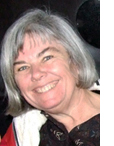 Nancy Harrison Nancy Harrison
cruise & tour specialist
(619) 265-0808
.

ADVENTURES IN SAN DIEGO JEWISH HISTORY
Editor's Note: To create a permanent and accessible archive, we are reprinting news articles that appeared in back issues of various San Diego Jewish newspapers. You may access an index of the headlines of those articles by clicking here. You may also use the Google search program on our home page or on the headline index page to search for keywords or names.
Episcopalian Rector Invites Cantor To Participate in Midnight Mass
From Southwestern Jewish Press, December 30, 1949, page 8
At the invitation of Father Harry T. Burke, Rector of All Saints’ Episcopal Church, Cantor Julian Miller of Temple Beth Israel rendered the traditional “Panis Angelicus” at the Christmas Midnight Mass.
In welcoming Cantor Miller, Fr. Burke expressed the hope that “…the time is ever closer when superficial barriers between various faiths and cultures shall cease to exist.” He expressed the belief that “inter-faith understanding must inevitably lead to more compassionate human behavior.”
In commenting upon the invitation, Rabbi Morton Cohn stated “that we of Temple Beth Israel are delighted to make this sincere gesture of ‘good will to men’ by having Cantor Miller enhance the beauty of our Christian neighbors’ worship at this season so sacred to them. It is gratifying that a fine appreciation of Cantor Miller’s splendid abilities have reached beyond the Jewish community, and we are confident that he will prove a splendid cultural asset to the community at large.”
Cantor Miller has had considerable experience not only as a scholar of religious music but as a Director of Music of various faiths. Participation in inter-faith activities has convinced Cantor Miller that “self-respect is one thing—sharing it with others is what changes dogma to conviction.”
S.D. Lasker Lodge Bnai Brith Installation Set For Jan. 8
From Southwestern Jewish Press, December 30, 1949, page 8
An outstanding event in Bnai Brith annals will take place Sunday, January 8, at 8 p.m., Don Room of the El Cortez Hotel,when newly elected officers of San Diego Lasker Lodge will be installed.
The 1950 administration comprises Morrie Kraus, president; Jerry Freedman, first vice president; Lou Mogy second vice president; Ralph Feldman, warden; Zel Greenberg, guardian; Al Doctor, treasurer; Sam Brenes, recording secretary; Ed Baranov, financial and corresponding secretary; Sid Goldstein and Morrie Douglas, trustees, and Bill Schwartz, chaplain. Holdover trustees are Marshall Naiman, Manny Silberman, and Harry Wax.
Eli Levenson, member of the Grand Lodge Executive Committee, will be the installing officer. He will be assisted by Henry Weinberger, past Grand Lodge President. They plan to streamline the ceremony.
Immediately following the installation there will be dancing to the music of Bill Brandenberg and his orchestra, the same good music that was available at the lodge’s dinner dance at Casper’s Ranch. Refreshments will also be served during the evening.
Prior to the installation ceremony, a dinner will be held at 6 p.m. sharp in the Don Room to honor the incoming and outgoing officers. The complete cost of the prime rib meal will be $3.25 per person. A festive party is planned.
All members of Bnai Brith, as well as the community at large, are cordially invited to the installation at 8 p.m. and those who desire reservations for the dinner may do so by contacting Jerry Freedman at R-3817, chairman of the evening.
It is hoped that there will be a large turnout at both events that evening because this promises to be a memorial (sic, memorable) occasion.
Congregation Tifereth Israel
From Southwestern Jewish Press, December 30, 1949, page 8
Installation
Installation ceremonies for the newly elected Officers and Board Members of Congregation Tifereth Israel and its affiliate, the daughters of Israel, were held Thursday, December 29th, in the Synagogue.
Following the opening ceremonies, Rabbi Levens, as Installing Officer, spoke on the services rendered to the Congregation by the out-going Officers and Board Members. He pointed out that with the leadership of this group, Tifereth Israel Synagogue has, during the past year, enjoyed remarkable progress, telescoping at least five years of growth into one. He also scored the great strides made in membership, in Religious Service attendance, and in religious education, in Youth work, recreational and social activities, and in inter-faith and general Community participation. Mr. I. Jacobson, out-going President, then spoke on behalf of the administration whose work for the current year was brought to a conclusion.
After extending thanks to the Daughters of Israel for the many significant contributions made to the welfare of the Synagogue, Rabbi Levens then introduce the out-going President of that Organization, Mrs. Harry Douglas, who spoke on the program of activities carried on by the Daughters of Israel during the past year.
The newly inducted President, Alex J. Newman, then addressed the audience, emphasizing the course which the Synagogue progress must take and stressing the needs for the fullest cooperation and leading to prompt action in obtaining these objective.
“The erection of our Synagogue Center and Religious School rooms are a matter of prime importance,” said Mr. Newman. “The role of Tifereth Israel in the Jewish life of San Diego is growing in importance and significance, day by day. To properly play this role and to fulfill its sacred trust to this Community, we must have adequate facilities for our religious program and activities. My greatest effort will be directed toward the realization of this end. I urge and plead for your wholehearted cooperation and also pledge my support and cooperation with our sister Congregations towards building a richer Jewish life in our Community.”
Daughters of Israel
The installation of the newly elected Officers and Board Members of the Daughters of Israel followed. The following inducted into office were: Mrs. Rose Neumann, President; Mrs. Mary Schwartz, Vice-President; Mrs. Jennie Siner, treasurer; MRs. Ida Pearl, Recording Secretary; Mrs. Sarah Geller, Corresponding Secretary; Rose Weisberg, Social Secretary. Board members, Mmes Fannie Addleson, Jennie Kochberg, Jennie Schwartz, Laura Simons, Anna Lipshitz, Dora Berkowitz, Bertha Kahn, Zelda Solov, Rose Smith, Celia Bekouf, Sophie Blank. Mrs. Roes Neumann spoke briefly on behalf of the Organization which she has been selected to lead during the coming year. Honoring his many years of service to the Congregation in many capacities including his service as President a number of times, and as the out-going President this year, Mr. Jacobson was presented with an impressive remembrance. In making this presentation Mrs. Newman praised Mr. Jacobson’s loyalty and devotion to the Synagogue over a period of 27 years.
Before delivering the benediction, Rabbi Levens offered his thanks to the Congregation for their sincere and wholehearted support of his efforts on behalf of the Synagogue program, especially emphasizing the outstanding expressions of loyalty and backing which he received.
Mr. David Dapeer with a group of eight fine musicians, furnished the music for the installation ceremonies of Congregation Tifereth Israel.
A social hour sponsored by the Daughters of Israel followed the ceremonies.
Services
Sabbath Services will be at Tifereth Israel this Friday evening December 30th, at 8:15 p.m. Rabbi Levens’ sermon is entitled, “Camera Highlights in History,” a discussion based on the theme suggested by attempts to select the names and events that have had the most increased influence during the first half of the 20th Century, now being brought to a close. An Oneg Shabbat follows the Services. All are cordially invited.
{Return to top}






SAN DIEGO JEWISH WORLD: THE WEEK IN REVIEW
International
Unlike Americans, Israeli families of politicians usually stay out of limelight by Ira Sharkansky in Jerusalem
Rabbi overcomes odds in Italy’s south by Karen Primack in Serrastretta, Italy
San Diego/Tijuana
American Reform group grows in Mexico by Gerry Greber in Tijuana, Mexico
Please actively support San Diego Jewish World~ways you can help
Adventures in San Diego Jewish History
—December 30, 1949: Tifereth Israel Junior League
—December 30, 1949: Council Nominates Officers for 1950:
—December 30, 1949 Memorial Altar Fund Drive Progressing
—December 30, 1949: Rabbi Cohn To Review ‘Why Jesus Died’
Arts
All is Vanities at Pasadena Playhouse by Cynthia Citron in Pasadena, California
Thursdays With the Songs of Hal Wingard
—#18, American Dream
—#23, Golden Shore
—#113, The Two Dollar Diamond
International
Children try to persuade parents to make aliyah from war-torn Georgia by Idan Peysahovich
Special Report: Internet AntiSemitism by Debora Stone in Canberra, Australia
The Jews Down Under, a roundup of Australian Jewish news by Garry Fabian in Melbourne:
—Year-long Israel odyssey inspires teacher
—NSW Premier announces security funding boost
—ECAJ President named to Claims Conference
—MP petitions Deputy Prime Minister to ban blog
—ADC calls for action against broadcasts
—Western Australian Jewish Community expands
—Central Synagogue feted with a grand concert
—Local lobby group apologizes
San Diego County
Neo-Nazi graffiti again plagues Ner Tamid by Donald H. Harrison in Poway, California
San Diego Jewish History
Adventures in San Diego Jewish History:
—December 30, 1949: J.C.R.A. by Anna Brooks
—December 30, 1949:Congregation Beth Jacob
—December 30, 1949:Beth Jacob Ladies Auxiliary
—December 30, 1949: Tifereth Israel Sisterhood
Arts
The Actors’ Gang brings the dead to life by Cynthia Citron in Culver City, California
International
Problems in U.S., Israel known; likely responses of leading candidates aren't by Ira Sharkansky in Jerusalem
Unusual ceremonies scheduled for Ramadan in Jerusalem and lifesaving at the Dead Sea by Judy Lash Balint in Jerusalem
San Diego County
Congregation Beth Am picnics on the green by Donald H. Harrison in San Diego
One of Jewish San Diego's favorite columnists walks—and writes!—again It's Gert Thaler in San Diego
San Diego Jewish History
Adventures in San Diego Jewish History:
— December 30, 1949:Jewish War Veterans of the United States by Binnie Brooks
— December 30, 1949:San Diego Birdie Stodel B’nai Brith Chapter No. 92 by Bess Borushek
— December 30, 1949:Senior Pioneer (Negba) Club
— December 30, 1949: Hadassah
Arts
Music of Our People, a collection of Jewish songs performed by Cantor Sheldon Merel of San Diego, debuts today on San Diego Jewish World with Adon Olam
International
Interfaith dialogue best at grassroots level by
Rabbi Dow Marmur in Toronto, Canada
Souvenirs not from U.S., Israel, but China by Donald H. Harrison in San Diego
National
Eco-activists rob U.S. of 'can-do' spirit by Sheila Orysiek in San Diego
Judaism
Arrival of family from Israel prompts the brit debate: who should do it and where? by Carol Davis in San Diego
Sports
Nike's 'Human Race' went well for red-shirted 10k runners in Tel Aviv by Ulla Hadar in Tel Aviv
San Diego Jewish History
—December 30, 1949: Life Begins for Rabbi Cohn
—December 39, 1949: Community Center Soccer Team
—December 30, 1949: Chaim Weizmann Labor Zionist Organization
—December 30, 1949: San Diego Hebrew Home Auxiliary
International
Amid Georgia's ruins, Jews weigh aliyah by Idan Peysahovich in Tbilisi, Georgia
Turkish diplomat saved Jews from Nazis by Rabbi Baruch Lederman in San Diego
National
Campaign 2008: VP pick Palin has 'strong working relationship' with Alaska's Jews by Matthew Brooks in Washington, D.C.
Campaign 2008: NJDC rejects RJC critique of Biden by Ira Forman in Washington D.C.
Judaism
Why so many laws not found in Torah? by Rabbi Leonard Rosenthal in San Diego
Lifestyles
Instrumental vs. nurturing friendships by Natasha Josefowitz in La Jolla, California
San Diego Jewish History
San Diego Jewish World seeks historic newspapers to archive on the web
Adventures in San Diego Jewish History:
—December 16, 1949: Beth Jacob P.T.A.
—December 16, 1949: Youth Groups to Stage Chanu-Kapers
—December 16, 1949: Temple Sisterhood
—December 30, 1949: Federation Plans Community Survey
—December 30, 1949: Community to Know Allocations Before Campaign Begins
Tough interview: a jet-lagged grandson, 7 by Donald H. Harrison in San Diegoby Sheila Orysiek in San DiegoSan Diego Jewish World seeks historic newspapers to archive on the webAdventures in San Diego Jewish Historyby Henry Bowmanby Binni Brooksby Bess Boroshek
Link to previous editions
< BACK TO TOP
Copyright 2007-2008 - San Diego Jewish World, San Diego, California. All rights reserved. |
|